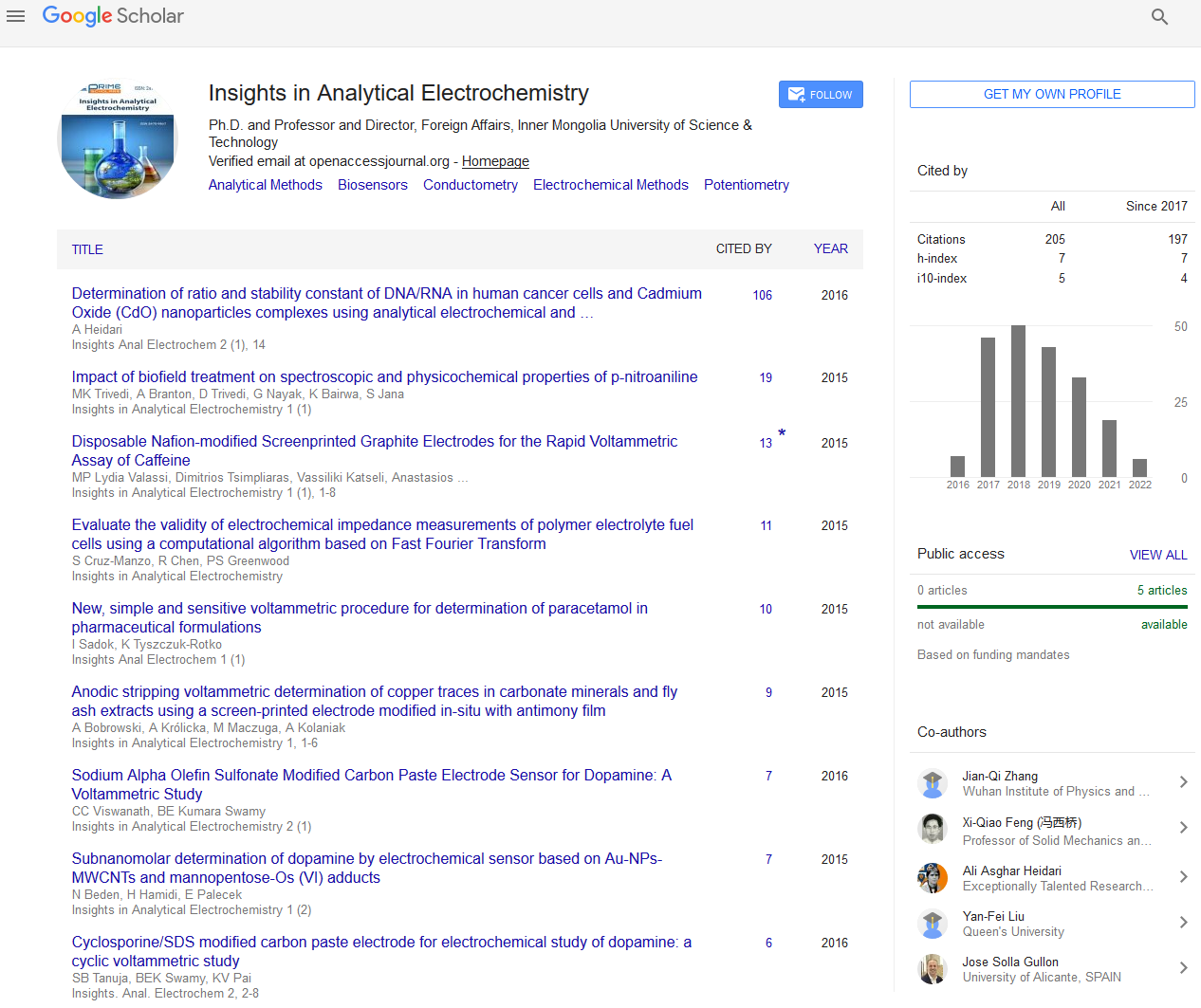Commentary - (2022) Volume 8, Issue 1
Annealing on LFN Properties in FD-SOI pTFET
Daisy Jackson*
Department of Electrochemistry, University of Edenburg, South Africa
*Correspondence:
Daisy Jackson, Department of Electrochemistry, University of Edenburg,
South Africa,
Email:
, Manuscript No. IPAEI -22-12708;
, Pre QC No. IPAEI -22-12708 (PQ);
, QC No. IPAEI -22-12708;
, Manuscript No. IPAEI -22-12708 (R);
, DOI: 10.21767 / ipaei - 8.1.3
Description
The impacts of high-pressure deuterium tempering and hydrogen
strengthening on electrical effectiveness and low-recurrence
clamor attributes in completely drained silicon-protected
p-type burrowing semiconductors (pTFETs) were researched.
Electrical execution and low-recurrence commotion qualities
have been improved by high-pressure deuterium toughening.
Average commotion power phantom densities without high
strain tempering display two Lorentzian spectra, affected by a
quick snare site and a sluggish snare site. The thickness of point
of interaction traps bound to the quick catching locales is diminished
utilizing deuterium and high strain hydrogen tempering.
Since the snares close to the burrowing intersection add
to LFNs that have been immobilized utilizing deuterium and
high-pressure hydrogen toughening, high-pressure H2 and D2
strengthening can possibly become significant. what’s more, vital
for future burrowing incorporated field-impact semiconductor
innovation. The field-impact semiconductor in the passage
(TFET) has drawn in impressive consideration as a cutting edge
low-power gadget since it can perform extremely low profile
off flows and sub-limit (SS) motions. under 60mV/month. Since
it is hard to accomplish exceptionally low SS without utilizing
unique substrates or designs, TFET activity is very touchy to
materials, math, and traps close to the source/channel (burrow)
intersection. Much examination has been done to work
on the electrical execution of TFETs by altering the gadget’s
design, presenting new substrate materials or further developing
the assembling innovation. Nonetheless, other significant
elements of TFET, like 1/f commotion and irregular message
signal clamor (RTN or RTS commotion), stand out enough to
be noticed notwithstanding being a significant restricting variable.
The impact of the caught locales in the door oxide and fluctuating initiated flows has turned into a significant worry
as gadgets are radically scaled down. The door and likely hindrance
between the channel and the source control the band
burrowing system (BTBT) in TFETs while the dissemination predisposition
is utilized in traditional MOSFETs. As a general rule,
the low recurrence commotion (LFN) trademark in customary
TFETs and MOSFETs has been overwhelmed by the door dielectric.
Besides, in TFETs, the catching and separation attributes
of trap locales a long way from the passage intersection can
affect the vacillations in the seepage current (IDS). A couple
of traps working around the passage of the TFET can influence
the electric field of the intersection, making the flow vacillate.
Moreover, the TFET has a high adequacy and critical gadget
to-gadget variety because of the RTN. As of late, the hatching
of deuterium (D2) and Hydro (H2) have been utilized to work
on the flimsiness of dependability and LFN properties of silicon
gadgets, including Nanowire FET. A few investigations have
announced that high tension brooding interaction works on
electrical execution and enjoys the benefit of short hatching
periods for the most part because of high focus climate D2 or
H2 in a particular space. The limiting energy of SI-D connection
is known to have a higher dynamic isomal impact than the SI-H
interface. At the end of the day, Si-D commitment gives an energy
course, making it more challenging to isolate. Be that as
it may, studies performed on PTFET have been restricted from
those directed on NTFET overall. What’s more, the impacts of
H2 and D2 toughening H2 and D2 on LFN and RTN qualities
in PTFET have not been accounted for. In this review, we concentrated
on the impacts of D2 and H2 high-voltage D2 center
on LFN properties in PTFET FDSOI. Staggered RTNs with no
high-pressure strengthening were seen because of the quick
snare area and the sluggish snare area. High-pressure deuterium
strengthening (HPDA) acts to solidify quick and slow snare locales for a wide scope of oxide entryway profundities. The
connection point trap thickness comparative with the quick
snare destinations was extricated utilizing the charge siphoning
technique. Furthermore, we remove the places of the sluggish
snare brought about by changes in the dynamic locale of the
pTFET. As per our discoveries on electrical execution and LFN
portrayal, high-pressure toughening is possibly significant and
important to yield better pTFET execution.
Acknowledgement
None.
Conflict of Interest
The author declares there is no conflict of interest in publishing
this article.
Copyright: This is an open access article distributed under the terms of the Creative Commons Attribution License, which permits unrestricted use, distribution, and reproduction in any medium, provided the original work is properly cited.

